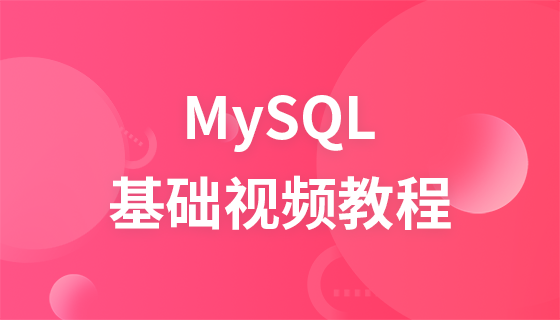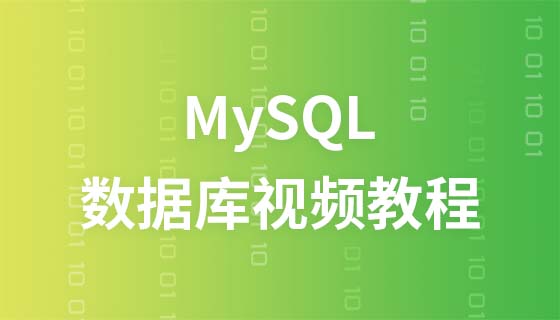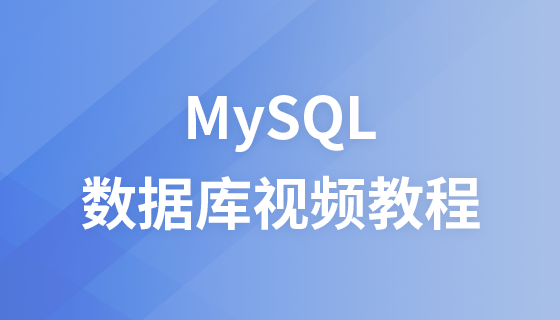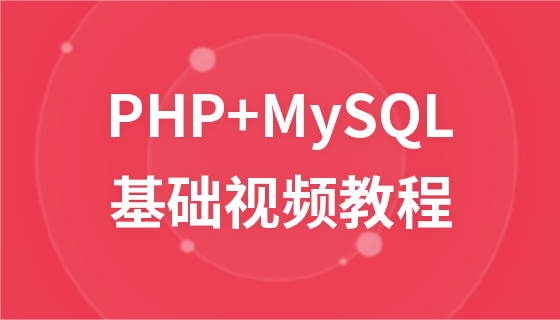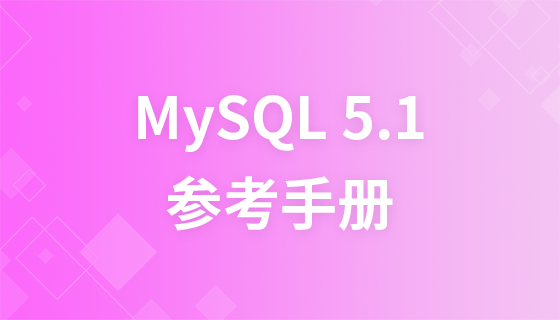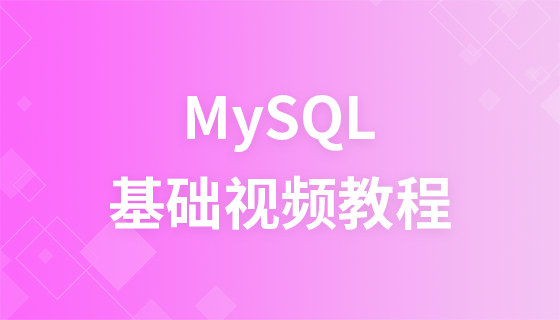
子查询是指一个查询语句嵌套在另一个查询语句内部的查询。在select子句中先计算子查询,子查询结果作为外层另一个查询的过滤条件,查询可以基于一个表或者多个表。
子查询中常用的操作符有any(some)、all、in、exists。子查询可以添加到select、update和delete语句中,而且可以进行多层嵌套。子查询中也可以使用比较运算符,如"<","<=",">",">=“和”!="。
(1)带any、some关键字的子查询
(2)带all关键字的子查询
(3)带exists关键字的子查询
(4)带in关键字的子查询
(5)带比较运算符的子查询
(免费学习推荐:mysql视频教程)
any和some关键字是同义词,表示满足其中任一条件,允许创建一个表达式对子查询的返回值列表进行比较,只要满足内层子查询中的任何一个比较条件,就返回一个结果作为外层查询的条件。
下面定义两个表tbl1和tbl2,并向两个表中插入数据:
mysql> create table tbl1( num1 int not null);Query OK, 0 rows affected (0.13 sec)mysql> create table tbl2(num2 int not null);Query OK, 0 rows affected (0.10 sec)mysql> insert into tbl1 values(1),(5),(13),(27);Query OK, 4 rows affected (0.05 sec)Records: 4 Duplicates: 0 Warnings: 0mysql> insert into tbl2 values(6),(14),(11),(20);Query OK, 4 rows affected (0.06 sec)Records: 4 Duplicates: 0 Warnings: 0
any关键字接在一个比较操作符后面,表示若与子查询返回的任何职比较为true,则返回true。
【例】返回tbl2表的所有num2列,然后将tbl1中的num1的值与之进行比较,只要大于num2的任何一个值,即为符合条件的结果。
mysql> select num1 from tbl1 where num1 > any(select num2 from tbl2);+------+| num1 |+------+| 13 || 27 |+------+2 rows in set (0.00 sec)
【例】返回tbl1表中比tbl2表num2列所有值都大的值,SQL语句如下:
mysql> select num1 from tbl1 where num1 > all(select num2 from tbl2);+------+| num1 |+------+| 27 |+------+1 row in set (0.00 sec)
【例1】查询suppliers表中是否存在s_id=107的的供应商,如果存在,则查询fruits表中的记录,SQL语句如下:
mysql> select * from fruits -> where exists -> (select s_name from suppliers where s_id = 107);+------+------+------------+---------+| f_id | s_id | f_name | f_price |+------+------+------------+---------+| 12 | 104 | lemon | 6.40 || a1 | 101 | apple | 5.20 || a2 | 103 | apricot | 2.20 || b1 | 101 | blackberry | 10.20 || b2 | 104 | berry | 7.60 || b5 | 107 | xxxx | 3.60 || bs1 | 102 | orange | 11.20 || bs2 | 105 | melon | 8.20 || c0 | 101 | cherry | 3.20 || m1 | 106 | mango | 15.70 || m2 | 105 | xbabay | 2.60 || m3 | 105 | xxtt | 11.60 || o2 | 103 | coconut | 9.20 || t1 | 102 | banana | 10.30 || t2 | 102 | grape | 5.30 || t4 | 107 | xbabay | 3.60 |+------+------+------------+---------+16 rows in set (0.00 sec)
由结果可知,内层查询结果表明suppliers表中存在s_id=107的记录,因此exists表达式返回true;外层查询语句接收true之后对表fruits进行查询,返回所有记录。
【例2】查询suppliers表中是否存在s_id=107的供应商,如果存在,则查询fruits表中的f_price大于10.20的记录,SQL语句如下:
mysql> select * from fruits -> where f_price > 10.20 and exists -> (select s_name from suppliers where s_id = 107);+------+------+--------+---------+| f_id | s_id | f_name | f_price |+------+------+--------+---------+| bs1 | 102 | orange | 11.20 || m1 | 106 | mango | 15.70 || m3 | 105 | xxtt | 11.60 || t1 | 102 | banana | 10.30 |+------+------+--------+---------+4 rows in set (0.00 sec)
可以看到,内层查询表名suppliers表中存在s_id=107的记录,因此exists表达式返回true;外层查询语句接收true之后根据查询条件f_price>10.20对fruits表进行查询,返回结果为4条f_price大于10.20的记录。
【例3】查询suppliers表中是否存在s_id =107的供应商,如果不存在就查询fruits表中的记录,SQL语句如下:
mysql> select * from fruits -> where not exists -> (select s_name from suppliers where s_id = 107);Empty set (0.00 sec)
可以看到,内层查询返回结果为false,外层表达式接收false将不再查询fruits表中的记录。
注意:exists 和 not exists的结果只取决于是否会返回行,而不取决于这些行的内容,所以这个子查询输入列表通常是无关紧要的。
【例1】在orderitems表中查询f_id为c0的订单号,并根据订单号查询具有订单号的客户c_id,SQL语句如下:
mysql> select c_id from orders where o_num in -> (select o_num from orderitems where f_id = 'c0');+-------+| c_id |+-------+| 10004 || 10001 |+-------+2 rows in set (0.00 sec)
上面的语句是下面查询方式的简写:
mysql> select o_num from orderitems where f_id = 'c0';+-------+| o_num |+-------+| 30003 || 30005 |+-------+2 rows in set (0.00 sec)mysql> select c_id from orders where o_num in (30003,30005);+-------+| c_id |+-------+| 10004 || 10001 |+-------+2 rows in set (0.00 sec)
下面介绍与in相反的not in关键字:
【例2】与例1类似,但select语句中使用not in 关键字。SQL语句如下:
mysql> select c_id from orders where o_num not in -> (select o_num from orderitems where f_id ='c0');+-------+| c_id |+-------+| 10001 || 10003 || 10005 |+-------+3 rows in set (0.00 sec)
可以看到返回了三个表,查看orders中的记录可知,c_id等于10001的客户的订单不止一个:
mysql> select * from orders;+-------+---------------------+-------+| o_num | o_date | c_id |+-------+---------------------+-------+| 30001 | 2008-09-01 00:00:00 | 10001 || 30002 | 2008-09-12 00:00:00 | 10003 || 30003 | 2008-09-30 00:00:00 | 10004 || 30004 | 2008-10-03 00:00:00 | 10005 || 30005 | 2008-10-08 00:00:00 | 10001 |+-------+---------------------+-------+5 rows in set (0.00 sec)
结果只是排除了订单号,但仍然有可能选择同一个客户。
子查询的功能也可以通过连接查询完成,但子查询使得MySQL代码更容易阅读和编写。
【例1】在suppliers表中查询s_city等于"Tianjin"的供应商s_id,然后在fruits表中查询所有该供应商提供的水果的种类,SQL语句如下:
mysql> select s_id,f_name from fruits -> where s_id = -> (select s1.s_id from suppliers as s1 where s1.s_city = 'Tianjin');+------+------------+| s_id | f_name |+------+------------+| 101 | apple || 101 | blackberry || 101 | cherry |+------+------------+3 rows in set (0.00 sec)
【例2】在suppliers表中查询s_city等于"Tianjin"的供应商,s_id,然后在fruits表中查询所有非该供应商提供的水果的种类,SQL语句如下:
mysql> select s_id , f_name from fruits -> where s_id <> -> (select s1.s_id from suppliers as s1 where s1.s_city ='Tianjin');+------+---------+| s_id | f_name |+------+---------+| 104 | lemon || 103 | apricot || 104 | berry || 107 | xxxx || 102 | orange || 105 | melon || 106 | mango || 105 | xbabay || 105 | xxtt || 103 | coconut || 102 | banana || 102 | grape || 107 | xbabay |+------+---------+13 rows in set (0.00 sec)
更多相关免费学习推荐:mysql教程(视频)
以上是MySQL数据查询之子查询的详细内容。更多信息请关注PHP中文网其他相关文章!
